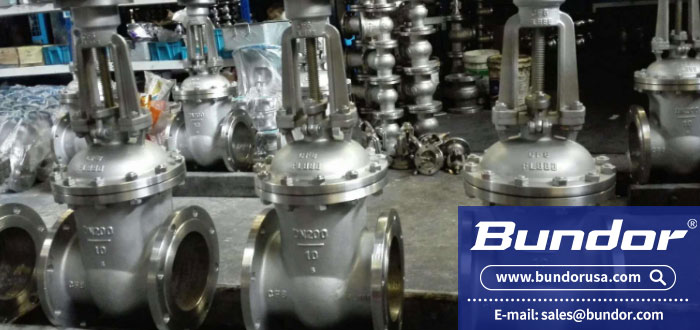What are the characteristics of forged steel low temperature globe valves?
Cryogenic valves, especially ultra-cryogenic valves, operate at extremely low temperatures.In addition to following the general valve planning guidelines, there are special requirements when planning this type of valve.

One, low temperature valve planning requirements
According to the operating conditions, the low temperature valve planning has the following requirements: (1) the valve in the low temperature medium and ambient temperature should have the ability to work for a long time.Valves should not be an obvious source of heat for a cryogenic system.This is due to the influx of heat in addition to the reduction of thermal efficiency, such as the influx of too much, will also make the internal fluid evaporation rapidly, abnormal pressure boost, the formation of danger.(3) The low-temperature media should not hand wheel operation and packing seal function occur harmful effects.(4) The valve assembly directly touched with the low-temperature medium should have explosion-proof and fire-proof structure.(5) In the low temperature operation of the valve assembly can not be smooth, so the need to take structural measures to avoid friction pieces abrasion.
Two, low-temperature valve data selectionFrom the perspective of metallography, in addition to austenite steel, copper, aluminum and other metal data with a face-centered cubic lattice, the general steel in the low temperature state will show low temperature brittleness, and then reduce the strength and service life of the valve.When selecting the subject data, the data suitable for low temperature operation should be selected first.Aluminum in low temperature will not show low temperature brittleness, but because of the hardness of aluminum and aluminum alloy is not high, aluminum sealing surface wear resistance, abrasion resistance, poor function, so in the use of low temperature valves must be bound, only in low pressure and small diameter valve selection.
Data in low temperature operation to ensure its low temperature function, mainly to ensure its cold impact strength.It is necessary to select the correct material so that it has the cold impact strength to avoid fracture.Alloy steels of C and Cr will soon lose their impact strength when they are lower than -20℃, so the temperature separation constraint is applied at -30℃ and -50℃.Nickel steel with a Ni content of 3.5% can be used at -100℃, while nickel steel with a Ni content of 9% can be used at -192℃.Austenitic stainless steel, nickel, Monel, Hastelloy, titanium, aluminum and bronze can be used at lower temperatures (-273℃).
In addition, the selection of low-temperature valve data should also consider the following elements:
The lowest operating temperature of the valve;(2) The metal data at low temperature to adhere to the mechanical functions required by operating conditions, especially impact toughness, relative elongation and arrangement stability;(3) Excellent friction resistance under the condition of low temperature and smooth oil free;(4) with excellent corrosion resistance;5) The welding function of the data should also be considered when selecting welding connection.
(2) The selection of data of valve body, valve cover, seat and disc (gate). The selection criteria of the data of these main parts and components are roughly as follows: ferritic steel shall be selected when the temperature is higher than -100℃;Austenitic steel is used when the temperature is lower than -100℃.Low pressure and small diameter valves can choose copper and aluminum and other materials.Select appropriate data according to the lowest operating temperature during planning.
(3) Selection of stem and fastener information
When the temperature is higher than -100℃, alloy steels such as Ni and CR-MO are selected for valve stem and bolt data. After proper heat treatment, the tensile strength can be improved and thread bite can be avoided.When the temperature is lower than -100℃, austenite stainless acid-proof steel is selected for manufacturing.But 18-8 acid resistant steel hardness is low, will cause the stem and packing scratch each other, resulting in packing leakage.Therefore, it is necessary to plate the stem surface with hard chromium (coating thickness of 0.04-0.06mm) or nitride and nickel phosphorus to improve the appearance of hardness.In order to avoid the nut and bolt bite dead, the nut is generally selected Mo steel or Ni steel, together with the thread surface coated with molybdenum disulfide.
 简体中文
简体中文 Русский
Русский Español
Español Bundor - Butterfly, Gate, Check, Ball, Globe Valve Manufacturer, Supplier & Distributor
Bundor - Butterfly, Gate, Check, Ball, Globe Valve Manufacturer, Supplier & Distributor
